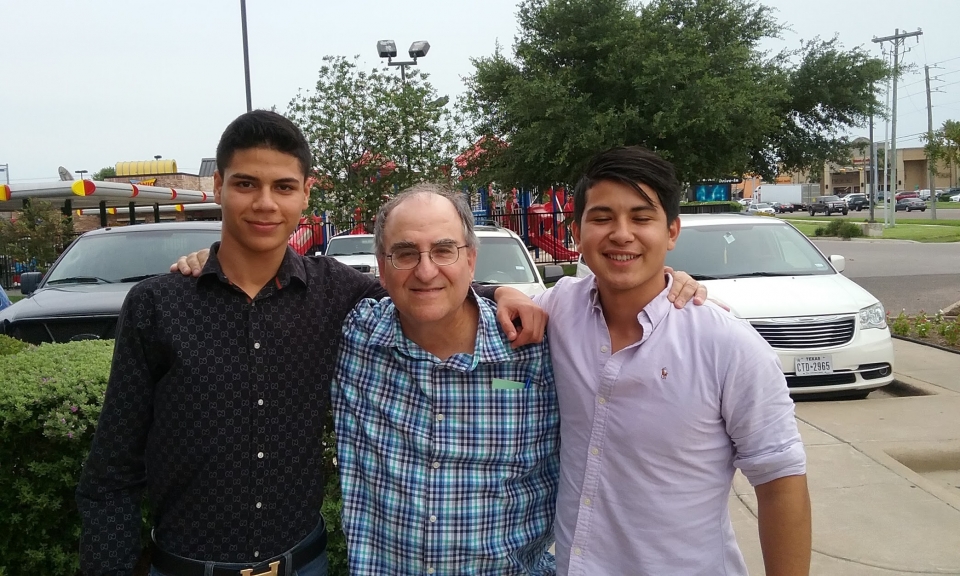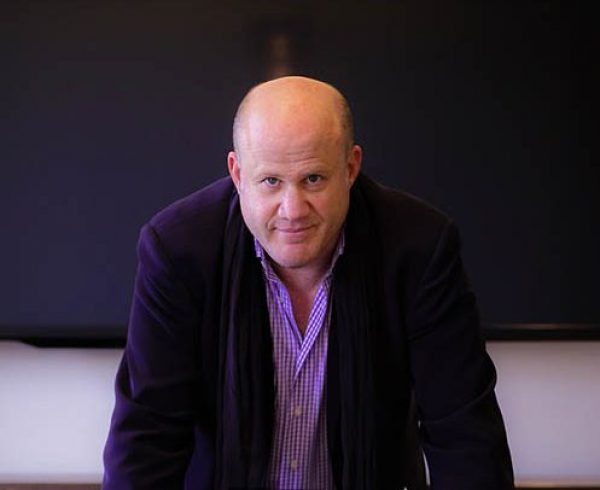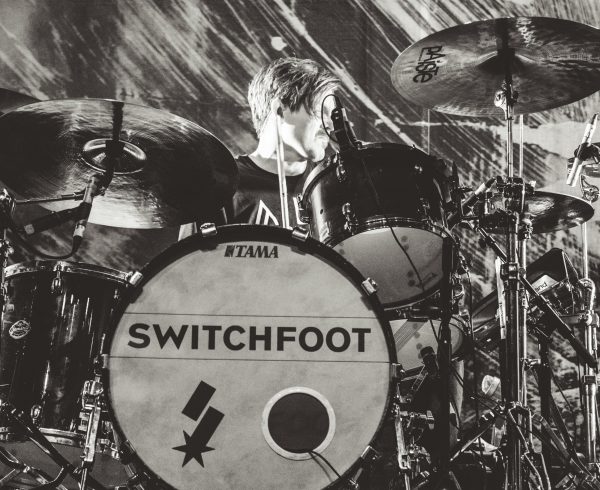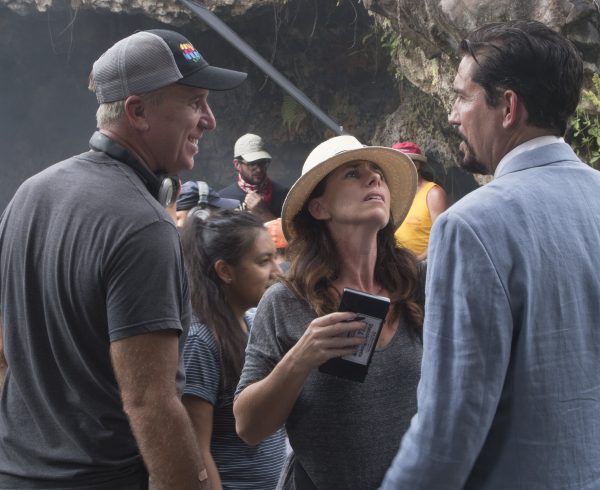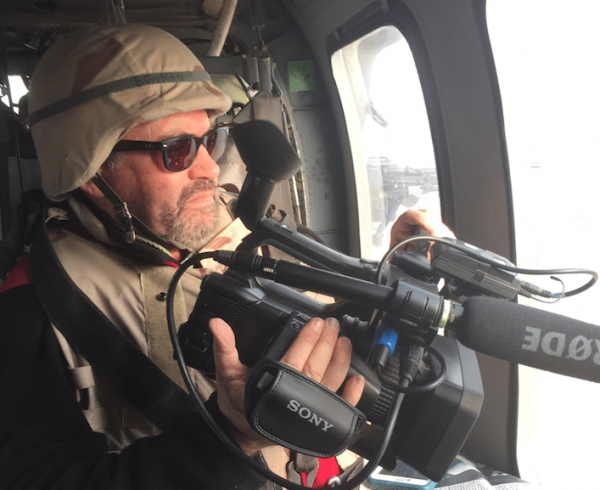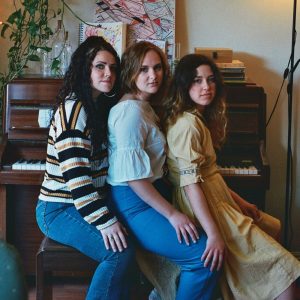Paving a Highway for Young Hispanic Filmmakers to Hollywood
Barry Glasser went from film journalist to marketer to screenwriter rubbing elbows with Hollywood’s greatest stars along the way. Now he teaches tomorrow’s creators a thing or two about what it takes to make it in the movie business then… and now. Here’s his take on the future of filmmaking.
Not far from where I grew up in Brooklyn is Coney Island, the fabled seaside amusement park and its three rollercoasters – the Cyclone, Tornado, and Thunderbolt. With all their twists, turns, curves, ups and downs, I rode them many times, and I continue to ride them, metaphorically, every day in the entertainment industry.
The best advice for anyone contemplating such a career is to take a deep breath, strap in, and be prepared for anything. Wherever you’re headed, you may not get there, at least not in a straight line. But it’s a wild ride for sure, and it will take you somewhere interesting. Just remember while that rollercoaster is moving, don’t stand up and lose your balance.
I always wanted to be a writer – any kind of writer. At seven, I published my own weekly magazine in pencil and crayon. My one subscriber, my dad, paid me ten cents per issue. Flash forward a decade and I was a graduate English student at New York University with a stack of unproduced screenplays.
In my sophomore undergraduate year, I signed on as the drama and film critic for the university newspaper. They didn’t have a critic, so I invented the position. It was a great way to see Broadway plays and new movies for free, as there were plenty of press agents who figured the teenage audience might just be an important one. My reviews caught the attention of the New York entertainment trade publications, and I was hired as a reporter and critic for two of them.
One of my first assignments was to interview Alfred Hitchcock – the director of my favorite film. There I sat in the posh Persian Room of the Plaza Hotel, dining with Hitchcock, jotting down notes. He couldn’t have been more pleasant and polite. But I’m sure he was surprised – perhaps appalled – his press tour included this kid journalist. I was determined to overcome whatever skeptical impression he might have of me. So I quickly segued into a round of questions to show off my knowledge of every last obscure Hitchcock factoid, and was prepared to discuss them on whatever level he chose – as a serious critic or as a fan. A smile spread across his face as I asked him the significance of an aerial shot in Topaz. He knew and appreciated what I was trying to accomplish. One hour and one-and-a-half wine bottles later, I took leave of the greatest director I’d ever gotten tipsy with.
That was the era when Hitchcock, Hawks, Huston, Welles, Wyler, Wilder, Ford, Minnelli and Mankiewicz were still alive, and the brash newcomers were Nichols, Coppola, Penn, Lucas, Spielberg, Scorsese and Mazursky. (Look them up. Better still, download their movies.) Scorsese just finished his first film, an obscure indie, when I interviewed him, and I remember him saying whether it bombed or led to other movies, at least he could say he had directed a film.
Then the rollercoaster sped me cross country to Hollywood like a bullet train when I was hired as publicity writer in the marketing division of Twentieth Century Fox. Ensconced in a trailer on the lot, I was writing press releases and press kits, meeting and interviewing all the stars and filmmakers, trying desperately to appear casual and not spill my coffee while seated across the table from Paul Newman, Audrey Hepburn, Cary Grant (retired from acting but serving as a studio board member), Princess Grace (ditto) among others. By the way, all the aforementioned were wonderful and all had senses of humor.
Paul Newman had a delicious satirical air about him; he viewed the business of Hollywood as an absurdity that never ceased to amuse him. Acting was another matter. When he snapped into character on the set, that relaxed, amusing fellow disappeared, replaced instantly by a serious, dedicated artist transformed into whoever he was playing.
As for Cary Grant, he is the only human I’ve ever met who actually glowed. His hair was gray but seemed to me to be genuine silver; his whole being was silver, some cosmic special effect. The charisma, the star power, was overpowering, it made you gasp. How much of it was something he could switch on and off like an inner incandescent light, I couldn’t tell you, though I suspect he was fully in control of the effect, and he was perfectly charming about it too. What gets lost in all the mythology about Grant as the penultimate movie star was what a consummate light comedian he was, the greatest the screen has ever seen.
Audrey Hepburn was working in a film on the Fox lot, one of her last. She sat down for an interview with me for the press notes for the film and uttered a line I will never forget: “There isn’t a day that goes by that I don’t appreciate how lucky I am.” She was so utterly modest. She refused to concede that talent had something to do with her success.
And I mingled with genuine royalty, too, when Princess Grace (formerly Grace Kelly) joined the Fox board of directors. I met her at a reception for the board members and watched her with Cary Grant, her co-star in Hitchcock’s To Catch a Thief, me and the entire marketing division trying not to stare, trying to act nonchalant while our eyeballs had taken leave of their sockets. A year or so later, Grace was killed in an automobile accident. I wrote her obituary on behalf of the studio. I wrote it as a fan. No matter how accustomed I became to working with legends, the part of me that was a fan always remained.
I also worked with legends on their way up. Tom Hanks did his first movie, Splash, at Disney when I was publicity veep there. We had no idea how a comedy about a young man who falls in love with a mermaid would fare. On opening day, I drove Tom and the director, Ron Howard, around Los Angeles to see how the film was performing at local theatres. There were long lines at all of them, and Tom Hanks realized he had become a star.
I also worked with legends about to exit the spotlight like Billy Wilder while I was at Fox. Wilder, the genius who directed and co-wrote Sunset Boulevard, Some Like It Hot, and The Apartment, arrived at the marketing division to meet the staff and discuss publicity opportunities. The only problem was, none of my colleagues were terribly interested in hanging out with him. He and his films were yesterday. So, by default, I got to spend the entire day talking movies with Wilder, who was cynical enough to understand the brushoff he was receiving, and here was I, this kid who idolized him trying to take the edge off the despicable indifference that greeted him. He shrugged it all off, he’d been through far worse, and I had him to myself all day.
One thing I learned while in that department was if “marketing” didn’t think we could sell the movie, it didn’t get made. Every script was put through a test. An ad was prepared showing title, potential stars, artwork and a logline, and the ad was then tested in shopping malls. If shoppers were uninterested, forget it – the project ended up in what we called File 13. Now, obviously such a procedure favored movies with well-known brand elements – a title or characters with name recognition from another medium or from a previous film, which is why so many films today are sequels and so few genuine originals.
The big studios gradually segued out of the film business and into the franchise business – movies as theme parks with ancillary upside, a phrase which meant they could generate revenues from merchandising spinoffs like toys, games, music, cereals, mugs, t-shirts. Original movies – i.e. Three Billboards Outside Ebbing Missouri, The Shape of Water, Lady Bird – are no longer made by major studios but smaller independent companies or art film divisions within studios.
I became great at the marketing game, rising through the executive ranks, crafting advertising and publicity campaigns at Fox and then at Disney and MGM, and being elected to the Academy of Motion Picture Arts and Sciences as a voting member. But I was not working as a screenwriter, my lifelong dream. Until one day, when a science fiction fantasy script of mine got some traction. My agent told me to report to a certain office at the ABC network to meet with the development executive who wanted to produce the script as a TV series. When I got there, I thought he gave me the wrong office number because I was in the animation division.
That’s how the rollercoaster whipped me out of marketing around a hairpin turn into animated television where I found myself with three series on the air and so busy that I slept in my office for the next few years. I never intended to become a marketing executive or an animation producer/writer, but you hang on and enjoy the ride wherever it takes you.
Along the way, I had a live-action screenplay produced at Universal, a family film Golddiggers: the Secret of Bear Mountain, which is still generating – here comes that word again – ancillary income. And the rollercoaster then stretched across the Pacific to take me to China to produce an animated television series for China Central Television (CCTV), the world’s biggest broadcaster where I was the first American to develop a series for that network.
That brings me to the most unexpected of all the stops on the journey – the Rio Grande Valley in Texas and the cities of Pharr and McAllen, 5 miles north of the Mexican border, an area thriving with first, second and third generation Mexican Americans becoming the next great chapter in our country’s ever-evolving success story.
I wanted a change, I followed my instinct, and it landed me on the faculty of South Texas College, teaching English at PSJA Southwest Early College High School in a program that allows advanced students to earn college credits. Four years later, my students and I have produced a full-length feature film Time For A Champion; published a 200-page volume of student essays, Voices From the Valley; and are preparing to shoot short films based on several of the life-experience essays in the book.
I’m still writing and selling screenplays. But learning from the next generation of this country’s leaders how to overcome obstacles, build strength of character, and transform ideals into action has made me a better writer. My students inspire me every day.
As do those whose work I see each year as a member in the Academy of Motion Picture Arts and Sciences as part of the Student Academy Awards. Student filmmakers at colleges and universities throughout the world are invited to submit short films in categories including narrative, documentary, animation, foreign language which are judged by selected Academy members who sit on panels through three rounds of judging. If any of you reading this are attending a film school at an institution of higher education, make sure you look further into this program.
The opportunity this competition creates for new filmmakers to have their work seen and for established professionals to usher in the next generation of filmmakers is as emotional and thrilling as you might imagine, especially when the winners are acknowledged on the stage of the Academy’s theatre in Hollywood, flanked by two glistening models of giant golden Oscar statuettes.
And as one who has judged these student films, I can attest that the caliber of these films is not only equal to the contenders for the regular Oscars, but in some cases it is superior. And that gives me great hope and faith in the future of filmmaking.
Oh, yes, I almost forgot – my favorite movie – it’s Vertigo.

